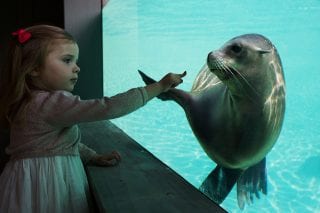Fun facts
Speedy swimming
The California sea lion can swim faster than any other sea lion or seal species. They can swim at a speed of up to 40 km/h when in pursuit of prey, but they normally swim at 10-15 km/h.
Hold your breath
California sea lions can slow their heart rate, allowing them to remain underwater for up to 10 minutes before surfacing to breathe. This allows them to spend a lot of time underwater in pursuit of fish.
Follow the dolphin!
California sea lions have been known to follow dolphins to locate food.


